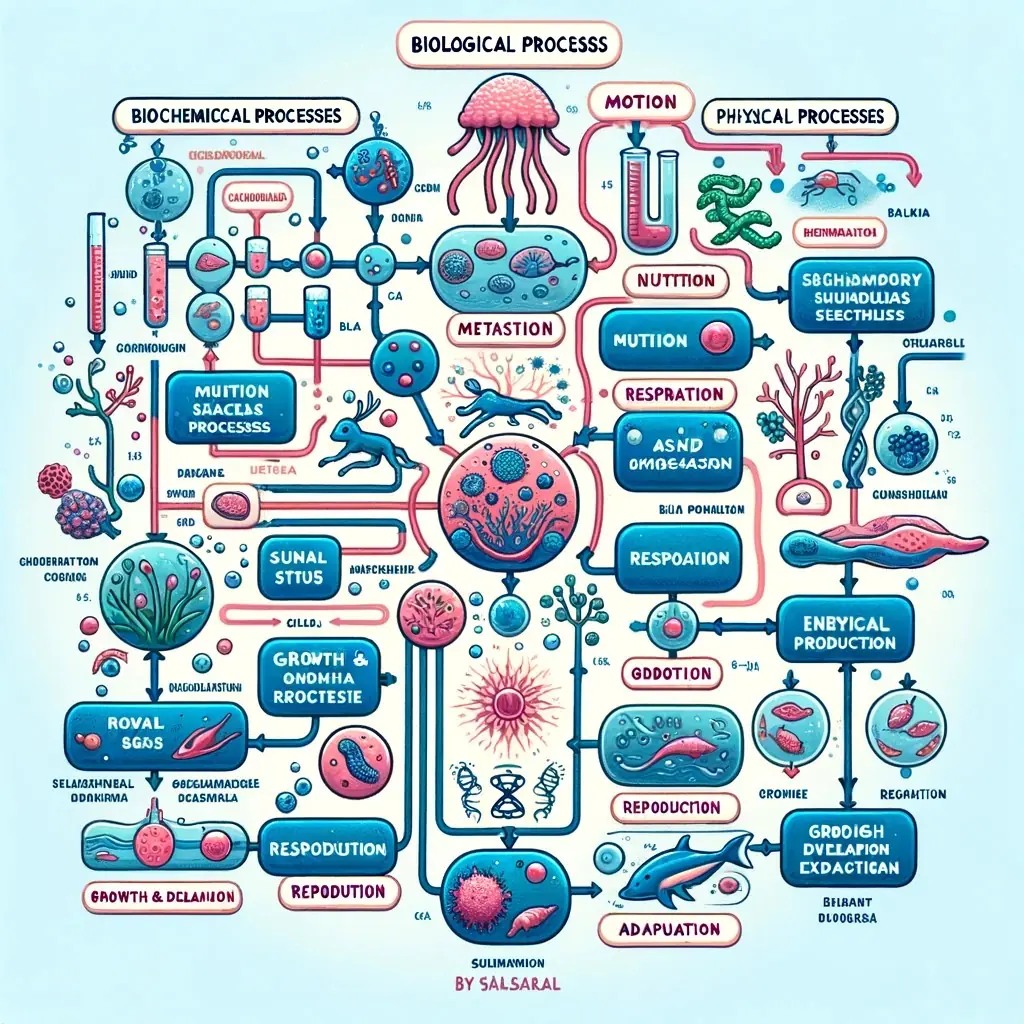
Understanding Biological Processes: A Comprehensive Overview

Introduction
Biological processes are the myriad of activities that occur within living organisms. These processes are essential for survival, growth, development, and reproduction. Broadly categorized into biochemical and physical processes, each plays a pivotal role in the functioning and sustainability of life. This article delves into the significance of these processes and their contributions to the life cycle of organisms.
Biochemical Processes: The Chemical Dynamics of Life
Biochemical processes encompass the chemical changes occurring within living organisms. These are fundamental to life, as they are responsible for converting and utilizing energy, constructing and degrading molecules, and regulating bodily functions.
- Nutrition and Metabolism: Nutrition is the process by which organisms take in food and convert it into energy and nutrients. Metabolism, on the other hand, refers to the chemical reactions that break down these nutrients to release energy, which is vital for bodily functions.
- Respiration: This is the process by which cells extract energy from food. In aerobic respiration, oxygen is used to break down glucose, releasing energy, water, and carbon dioxide. This energy is crucial for various cellular activities.
- Excretion: The removal of metabolic waste products. This process is essential to maintain homeostasis and prevent the buildup of harmful substances in the body.
- Energy Production: Central to survival, this involves the synthesis of ATP (adenosine triphosphate), the energy currency of the cell, which powers numerous cellular activities.
Physical Processes: The Mechanics of Life
Physical processes in living organisms are related to physical changes and movements. They are crucial for adaptation, growth, and reproduction.
- Motion and Locomotion: Movement is an essential physical process, enabling organisms to interact with their environment, find food, escape predators, and mate.
- Growth and Development: This encompasses the processes by which organisms increase in size and complexity. Development refers to the progression of an organism from an early stage to a more mature form, involving differentiation and morphogenesis.
- Reproduction: This is vital for the continuation of species. It can be sexual, involving the fusion of gametes from two individuals, or asexual, where offspring are genetically identical to the parent.
- Adaptation: This physical process involves changes in an organism over time in response to environmental challenges, ensuring survival and reproduction.
Interplay Between Biochemical and Physical Processes
The biochemical and physical processes are intricately linked. For instance, energy produced by biochemical processes like respiration is essential for physical activities like movement. Similarly, the physical process of eating is necessary for the biochemical process of digestion.
Conclusion
Understanding the myriad of biochemical and physical processes in living organisms provides insights into the complexity of life. These processes work in harmony to ensure the survival, growth, and perpetuation of species. As we continue to study these processes, we not only deepen our comprehension of biology but also enhance our ability to address various biological challenges and improve life on Earth.